Mathematical finance, also known as quantitative finance and financial mathematics, is a field of applied mathematics, concerned with mathematical modeling in the financial field.
In general, there exist two separate branches of finance that require advanced quantitative techniques: derivatives pricing on the one hand, and risk and portfolio management on the other.[1] Mathematical finance overlaps heavily with the fields of computational finance and financial engineering. The latter focuses on applications and modeling, often with the help of stochastic asset models, while the former focuses, in addition to analysis, on building tools of implementation for the models. Also related is quantitative investing, which relies on statistical and numerical models (and lately machine learning) as opposed to traditional fundamental analysis when managing portfolios.
French mathematician Louis Bachelier's doctoral thesis, defended in 1900, is considered the first scholarly work on mathematical finance. But mathematical finance emerged as a discipline in the 1970s, following the work of Fischer Black, Myron Scholes and Robert Merton on option pricing theory. Mathematical investing originated from the research of mathematician Edward Thorp who used statistical methods to first invent card counting in blackjack and then applied its principles to modern systematic investing.[2]
The subject has a close relationship with the discipline of financial economics, which is concerned with much of the underlying theory that is involved in financial mathematics. While trained economists use complex economic models that are built on observed empirical relationships, in contrast, mathematical finance analysis will derive and extend the mathematical or numerical models without necessarily establishing a link to financial theory, taking observed market prices as input. See: Valuation of options; Financial modeling; Asset pricing. The fundamental theorem of arbitrage-free pricing is one of the key theorems in mathematical finance, while the Black–Scholes equation and formula are amongst the key results.[3]
Today many universities offer degree and research programs in mathematical finance.
History: Q versus P
There are two separate branches of finance that require advanced quantitative techniques: derivatives pricing, and risk and portfolio management. One of the main differences is that they use different probabilities such as the risk-neutral probability (or arbitrage-pricing probability), denoted by "Q", and the actual (or actuarial) probability, denoted by "P".
Derivatives pricing: the Q world
The goal of derivatives pricing is to determine the fair price of a given security in terms of more liquid securities whose price is determined by the law of supply and demand. The meaning of "fair" depends, of course, on whether one considers buying or selling the security. Examples of securities being priced are plain vanilla and exotic options, convertible bonds, etc.
Once a fair price has been determined, the sell-side trader can make a market on the security. Therefore, derivatives pricing is a complex "extrapolation" exercise to define the current market value of a security, which is then used by the sell-side community. Quantitative derivatives pricing was initiated by Louis Bachelier in The Theory of Speculation ("Théorie de la spéculation", published 1900), with the introduction of the most basic and most influential of processes, Brownian motion, and its applications to the pricing of options.[4][5] Brownian motion is derived using the Langevin equation and the discrete random walk.[6] Bachelier modeled the time series of changes in the logarithm of stock prices as a random walk in which the short-term changes had a finite variance. This causes longer-term changes to follow a Gaussian distribution.[7]
The theory remained dormant until Fischer Black and Myron Scholes, along with fundamental contributions by Robert C. Merton, applied the second most influential process, the geometric Brownian motion, to option pricing. For this M. Scholes and R. Merton were awarded the 1997 Nobel Memorial Prize in Economic Sciences. Black was ineligible for the prize because he died in 1995.[8]
The next important step was the fundamental theorem of asset pricing by Harrison and Pliska (1981), according to which the suitably normalized current price P0 of security is arbitrage-free, and thus truly fair only if there exists a stochastic process Pt with constant expected value which describes its future evolution:[9]
A process satisfying (1) is called a "martingale". A martingale does not reward risk. Thus the probability of the normalized security price process is called "risk-neutral" and is typically denoted by the blackboard font letter "".
The relationship (1) must hold for all times t: therefore the processes used for derivatives pricing are naturally set in continuous time.
The quants who operate in the Q world of derivatives pricing are specialists with deep knowledge of the specific products they model.
Securities are priced individually, and thus the problems in the Q world are low-dimensional in nature. Calibration is one of the main challenges of the Q world: once a continuous-time parametric process has been calibrated to a set of traded securities through a relationship such as (1), a similar relationship is used to define the price of new derivatives.
The main quantitative tools necessary to handle continuous-time Q-processes are Itô's stochastic calculus, simulation and partial differential equations (PDEs).[10]
Risk and portfolio management: the P world
Risk and portfolio management aims to model the statistically derived probability distribution of the market prices of all the securities at a given future investment horizon. This "real" probability distribution of the market prices is typically denoted by the blackboard font letter "", as opposed to the "risk-neutral" probability "" used in derivatives pricing. Based on the P distribution, the buy-side community takes decisions on which securities to purchase in order to improve the prospective profit-and-loss profile of their positions considered as a portfolio. Increasingly, elements of this process are automated; see Outline of finance § Quantitative investing for a listing of relevant articles.
For their pioneering work, Markowitz and Sharpe, along with Merton Miller, shared the 1990 Nobel Memorial Prize in Economic Sciences, for the first time ever awarded for a work in finance.
The portfolio-selection work of Markowitz and Sharpe introduced mathematics to investment management. With time, the mathematics has become more sophisticated. Thanks to Robert Merton and Paul Samuelson, one-period models were replaced by continuous time, Brownian-motion models, and the quadratic utility function implicit in mean–variance optimization was replaced by more general increasing, concave utility functions.[11] Furthermore, in recent years the focus shifted toward estimation risk, i.e., the dangers of incorrectly assuming that advanced time series analysis alone can provide completely accurate estimates of the market parameters.[12] See Financial risk management § Investment management.
Much effort has gone into the study of financial markets and how prices vary with time. Charles Dow, one of the founders of Dow Jones & Company and The Wall Street Journal, enunciated a set of ideas on the subject which are now called Dow Theory. This is the basis of the so-called technical analysis method of attempting to predict future changes. One of the tenets of "technical analysis" is that market trends give an indication of the future, at least in the short term. The claims of the technical analysts are disputed by many academics.[citation needed]
Criticism
The aftermath of the financial crisis of 2009 as well as the multiple Flash Crashes of the early 2010s resulted in social uproars in the general population and ethical malaises in the scientific community which triggered noticeable changes in Quantitative Finance (QF). More specifically, mathematical finance was instructed to change and become more realistic as opposed to more convenient. The concurrent rise of Big data and Data Science contributed to facilitating these changes. More specifically, in terms of defining new models, we saw a significant increase in the use of Machine Learning overtaking traditional Mathematical Finance models.[13]
Over the years, increasingly sophisticated mathematical models and derivative pricing strategies have been developed, but their credibility was damaged by the financial crisis of 2007–2010. Contemporary practice of mathematical finance has been subjected to criticism from figures within the field notably by Paul Wilmott, and by Nassim Nicholas Taleb, in his book The Black Swan.[14] Taleb claims that the prices of financial assets cannot be characterized by the simple models currently in use, rendering much of current practice at best irrelevant, and, at worst, dangerously misleading. Wilmott and Emanuel Derman published the Financial Modelers' Manifesto in January 2009[15] which addresses some of the most serious concerns. Bodies such as the Institute for New Economic Thinking are now attempting to develop new theories and methods.[16]
In general, modeling the changes by distributions with finite variance is, increasingly, said to be inappropriate.[17] In the 1960s it was discovered by Benoit Mandelbrot that changes in prices do not follow a Gaussian distribution, but are rather modeled better by Lévy alpha-stable distributions.[18] The scale of change, or volatility, depends on the length of the time interval to a power a bit more than 1/2. Large changes up or down are more likely than what one would calculate using a Gaussian distribution with an estimated standard deviation. But the problem is that it does not solve the problem as it makes parametrization much harder and risk control less reliable.[14]
Perhaps more fundamental: though mathematical finance models may generate a profit in the short-run, this type of modeling is often in conflict with a central tenet of modern macroeconomics, the Lucas critique - or rational expectations - which states that observed relationships may not be structural in nature and thus may not be possible to exploit for public policy or for profit unless we have identified relationships using causal analysis and econometrics.[19] Mathematical finance models do not, therefore, incorporate complex elements of human psychology that are critical to modeling modern macroeconomic movements such as the self-fulfilling panic that motivates bank runs.
See also
Mathematical tools
- Asymptotic analysis
- Backward stochastic differential equation
- Calculus
- Copulas, including Gaussian
- Differential equations
- Expected value
- Ergodic theory
- Feynman–Kac formula
- Finance § Quantitative finance
- Fourier transform
- Girsanov theorem
- Itô's lemma
- Martingale representation theorem
- Mathematical models
- Mathematical optimization
- Monte Carlo method
- Numerical analysis
- Real analysis
- Partial differential equations
- Probability
- Probability distributions
- Quantile functions
- Radon–Nikodym derivative
- Risk-neutral measure
- Scenario optimization
- Stochastic calculus
- Stochastic differential equation
- Stochastic optimization
- Stochastic volatility
- Survival analysis
- Value at risk
- Volatility
Derivatives pricing
- The Brownian model of financial markets
- Rational pricing assumptions
- Risk neutral valuation
- Arbitrage-free pricing
- Valuation adjustments
- Yield curve modelling
- Forward Price Formula
- Futures contract pricing
- Swap valuation
- Options
- Put–call parity (Arbitrage relationships for options)
- Intrinsic value, Time value
- Moneyness
- Pricing models
- Black–Scholes model
- Black model
- Binomial options model
- Monte Carlo option model
- Implied volatility, Volatility smile
- Local volatility
- Stochastic volatility
- Markov switching multifractal
- The Greeks
- Finite difference methods for option pricing
- Vanna–Volga pricing
- Trinomial tree
- Garman-Kohlhagen model
- Lattice model (finance)
- Margrabe's formula
- Carr–Madan formula
- Pricing of American options
- Interest rate derivatives
- Black model
- Short-rate models
- Forward rate-based models
- LIBOR market model (Brace–Gatarek–Musiela Model, BGM)
- Heath–Jarrow–Morton Model (HJM)
Portfolio modelling
Other
- Computational finance
- Derivative (finance), list of derivatives topics
- Economic model
- Econophysics
- Financial economics
- Financial engineering
- Financial modeling § Quantitative finance
- International Association for Quantitative Finance
- International Swaps and Derivatives Association
- Index of accounting articles
- List of economists
- Master of Quantitative Finance
- Outline of economics
- Outline of finance
- Physics of financial markets
- Quantitative behavioral finance
- Statistical finance
- Technical analysis
- XVA
- Quantum finance
Notes
- ^ "Quantitative Finance". About.com. Retrieved 28 March 2014.
- ^ Lam, Leslie P. Norton and Dan. "Why Edward Thorp Owns Only Berkshire Hathaway". www.barrons.com. Retrieved 2021-06-06.
- ^ Johnson, Tim (1 September 2009). "What is financial mathematics?". +Plus Magazine. Retrieved 1 March 2021.
- ^ E., Shreve, Steven (2004). Stochastic calculus for finance. New York: Springer. ISBN 9780387401003. OCLC 53289874.
{{cite book}}: CS1 maint: multiple names: authors list (link) - ^ Stephen., Blyth (2013). Introduction to Quantitative Finance. Oxford University Press, USA. p. 157. ISBN 9780199666591. OCLC 868286679.
- ^ B., Schmidt, Anatoly (2005). Quantitative finance for physicists : an introduction. San Diego, Calif.: Elsevier Academic Press. ISBN 9780080492209. OCLC 57743436.
{{cite book}}: CS1 maint: multiple names: authors list (link) - ^ Bachelir, Louis. "The Theory of Speculation". Retrieved 28 March 2014.
- ^ Lindbeck, Assar. "The Sveriges Riksbank Prize in Economic Sciences in Memory of Alfred Nobel 1969-2007". Nobel Prize. Retrieved 28 March 2014.
- ^ Brown, Angus (1 Dec 2008). "A risky business: How to price derivatives". Price+ Magazine. Retrieved 28 March 2014.
- ^ For a survey, see "Financial Models", from Michael Mastro (2013). Financial Derivative and Energy Market Valuation, John Wiley & Sons. ISBN 978-1118487716.
- ^ Karatzas, Ioannis; Shreve, Steve (1998). Methods of Mathematical Finance. Secaucus, New Jersey, US: Springer-Verlag New York, Incorporated. ISBN 9780387948393.
- ^ Meucci, Attilio (2005). Risk and Asset Allocation. Springer. ISBN 9783642009648.
- ^ Mahdavi-Damghani, Babak (2019). "Data-Driven Models & Mathematical Finance: Apposition or Opposition?". PhD Thesis. Oxford, England: University of Oxford: 21.
- ^ a b Taleb, Nassim Nicholas (2007). The Black Swan: The Impact of the Highly Improbable. Random House Trade. ISBN 978-1-4000-6351-2.
- ^ "Financial Modelers' Manifesto". Paul Wilmott's Blog. January 8, 2009. Archived from the original on September 8, 2014. Retrieved June 1, 2012.
- ^ Gillian Tett (April 15, 2010). "Mathematicians must get out of their ivory towers". Financial Times.
- ^ Svetlozar T. Rachev; Frank J. Fabozzi; Christian Menn (2005). Fat-Tailed and Skewed Asset Return Distributions: Implications for Risk Management, Portfolio Selection, and Option Pricing. John Wiley and Sons. ISBN 978-0471718864.
- ^ B. Mandelbrot, "The variation of certain Speculative Prices", The Journal of Business 1963
- ^ Lucas, Bob. "ECONOMETRIC POEICY EVALUATION: A CRITIQUE" (PDF). Retrieved 2022-08-05.
Further reading
- Nicole El Karoui, "The future of financial mathematics", ParisTech Review, 6 September 2013
- Harold Markowitz, "Portfolio Selection", The Journal of Finance, 7, 1952, pp. 77–91
- William F. Sharpe, Investments, Prentice-Hall, 1985
- Pierre Henry Labordere (2017). “Model-Free Hedging A Martingale Optimal Transport Viewpoint”. Chapman & Hall/ CRC.
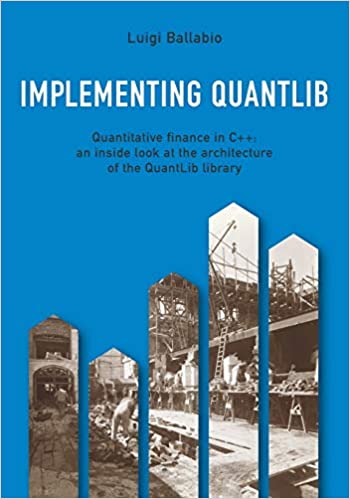
Implementing QuantLib:
Quantitative finance in C++: An inside look at the architecture of the QuantLib library
- Luigi Ballabio
This book is a report on the design and implementation of the QuantLib Library for C++
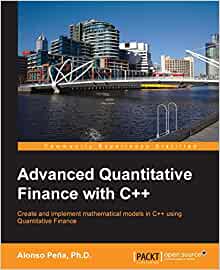
Advanced Quantitative Finance with C++:
Create and Implement Mathematical Models in C++ using Quantitative Finance.
Alonso Peña -
If you are a quantitative analyst, risk manager, actuary, or a professional working in the field of quantitative finance and want a quick hands-on introduction to the pricing of financial derivatives, this book is ideal for you.
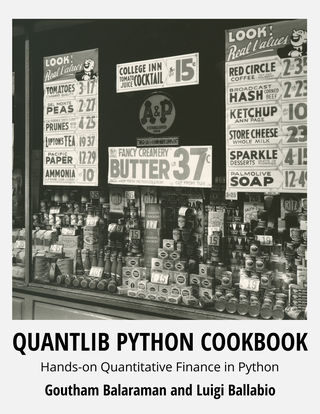
QuantLib Python Cookbook:
Quantitative finance in Python.
Goutham Balaraman and - Luigi Ballabio
A hands-on, interactive look at the QuantLib library through the use of Jupyter notebooks as working examples.
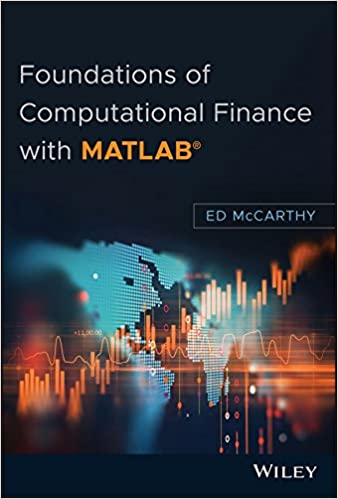
Foundations of Computational Finance with MATLAB®:
Graduate from Excel to MATLAB® to keep up with the evolution of finance data.
Ed McCarthy -
Foundations of Computational Finance with MATLAB® is an introductory text for both finance professionals looking to branch out from the spreadsheet, and for programmers who wish to learn more about finance.
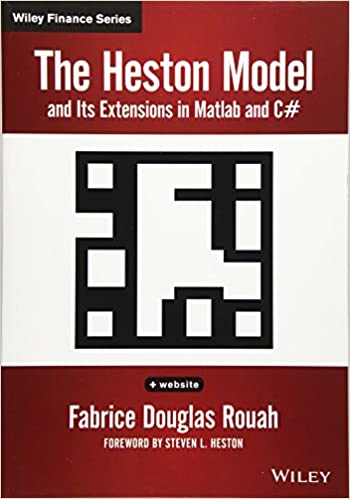
The Heston Model and its Extensions in Matlab and C#:
Fabrice D. Rouah, with Foreword by Steven L. Heston -
Tap into the power of the most popular stochastic volatility model for pricing equity derivatives.
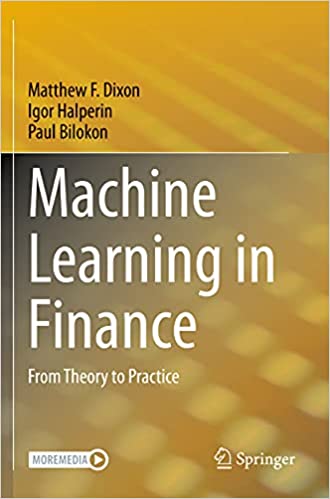
Machine Learning in Finance: From Theory to Practice:
Matthew F. Dixon, Igor Halperin, Paul Bilokon -
This book introduces machine learning methods in finance. It presents a unified treatment of machine learning and various statistical and computational disciplines in quantitative finance.

Practical Quantitative Finance with ASP.NET Core and Angular:
Building Ultra-Modern, Responsive Single-Page Web Applications for Quantitative Finance using ASP.NET Core and Angular.
Jack Xu -
Building Ultra-Modern, Responsive Single-Page Web Applications for Quantitative Finance using ASP.NET Core and Angular.

Financial Instrument Pricing Using C++ 2nd Ed.:
- Daniel Duffy
This complete guide to C++ and computational finance is a major extension to Daniel J. Duffy's 2004 edition.
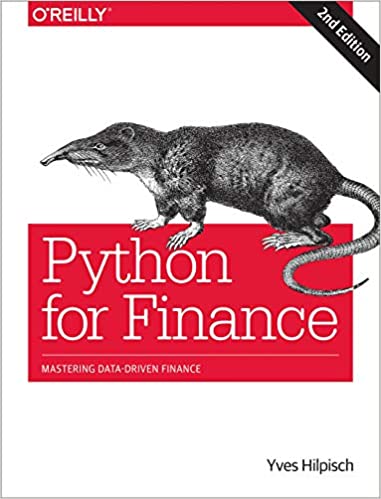
Python for Finance – 2nd Ed.:
Mastering Data-Driven Finance
- Yves Hilpisch
Yves Hilpisch shows you how to develop a full-fledged framework for Monte Carlo simulation-based derivatives and risk analytics.
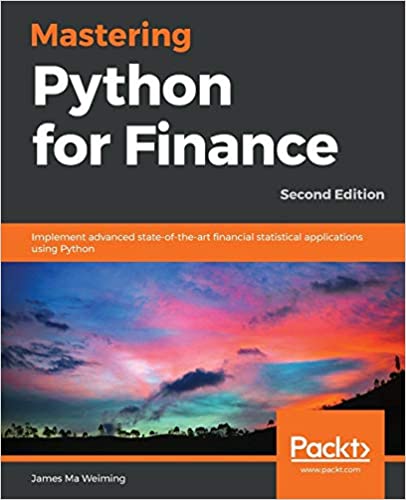
Mastering Python for Finance:
Implement advanced state-of-the-art financial statistical applications using Python, 2nd Edition
James Ma Weiming -
Explore advanced financial models, build state-of-the-art infrastructure, empower your financial applications.

Derivatives Analytics with Python:
Data Analysis, Models, Simulation, Calibration and Hedging
- Yves Hilpisch
This book is the finance professional's guide to exploiting Python's capabilities for efficient and performing derivatives analytics.
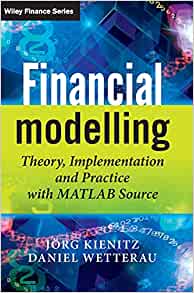
Financial Modelling: Theory, Implementation and Practice with MATLAB Source:
Daniel Wetterau - Jörg Kienitz
A unique contribution to the application of quantitative techniques to financial problems and programming using Matlab.

Strategic Asset Allocation in Fixed Income Markets:
A Matlab Based User′s Guide
Ken Nyholm -
"An extremely useful book for anyone interested in actually applying MATLAB based computational techniques to fixed-income problems"
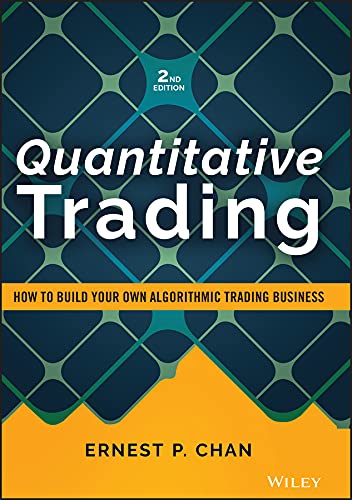
Quantitative Trading – 2nd Ed.:
How to Build Your Own Algorithmic Trading Business
- Ernest P. Chan
In this newly revised Second Edition, quant trading expert Dr. Ernest P. Chan shows you how to apply both time-tested and novel quantitative trading strategies to develop or improve your own trading firm.
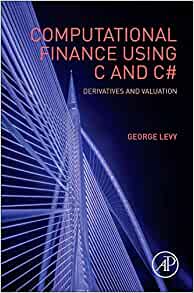
Computational Finance Using C and C#: Derivatives and Valuation:
George Levy -
Now in it's 2nd edition, this provides an overview of methods for pricing equity derivatives, interest rate derivatives, foreign exchange derivatives, and credit derivatives - in C and C++

Options and Derivatives Programming in C++20:
Algorithms and Programming Techniques for the Financial Industry
Carlos Oliveira -
Master the features of C++ that are frequently used to write financial software for options and derivatives, including the STL, templates, functional programming, and numerical libraries.

Applied Quantitative Finance: Using Python for Financial Analysis:
Mauricio Garita -
This book provides both conceptual knowledge of quantitative finance and a hands-on approach to using Python.

Quantitative Finance (Statistics in Practice):
Maria C. Mariani and Ionut Florescu -
This book presents quantitative finance theory through applications to specific practical problems and comes with accompanying coding techniques in R and MATLAB.

Quantitative Finance: An Object-Oriented Approach in C++:
Erik Schlögl -
Providing readers with a foundation in the key methods and models of quantitative finance. Keeping the material as self-contained as possible, the author introduces computational finance with a focus on practical implementation in C++.



